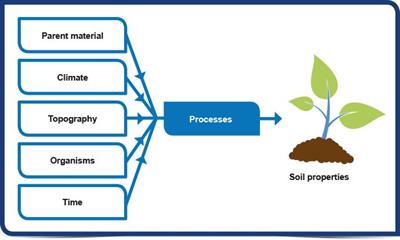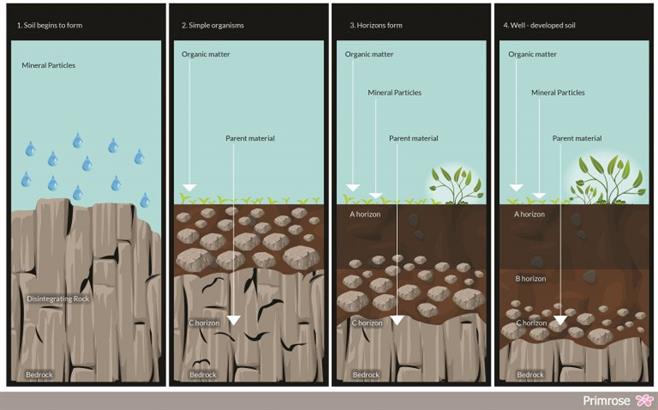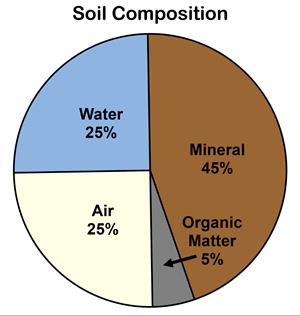
PUMPA - SMART LEARNING
எங்கள் ஆசிரியர்களுடன் 1-ஆன்-1 ஆலோசனை நேரத்தைப் பெறுங்கள். டாப்பர் ஆவதற்கு நாங்கள் பயிற்சி அளிப்போம்
Book Free DemoSoil is an unconsolidated material found on the earth’s surface, consisting of a mixture of air, water, minerals, plant and animal remains. It is a natural medium in which the plants grow. It forms the basis for the existence of life on the earth. It is rightly referred to as the ‘skin of the earth’. Soil is one of the most important renewable natural resources on the earth.

Soil formation:
All types of soil are derived from rocks called parent materials. These parent materials (rocks) break down into pieces because of weathering and the natural erosion process. Along with weathering of rocks, gravity, temperature, plants, animals pressure, water, topography, drainage interacts with each other in breaking the parent materials. The parent materials would become sand and silt and eventually turn into finer materials over the period of time—these finer particles known as topsoil, which supports all forms of life on the earth. The formation of soil is a continuous but slow process. It will take thousands of years to form one cm of the soil on the earth.

Soil Composition
Soil consists of both biotic and abiotic components. The basic components of soil are minerals, plants, animals, microorganisms, water and air. The proportion of these elements in the soil determines the nutrient level of the soil. They are very dynamic in nature and largely differ from region to region according to the factors such as parent material, climate, topography, vegetation, etc. The generalised pattern of soil composition is given below, though it varies from place to place.

Reference:
https://www.pmfias.com/soil-formation-indian-conditions-factors-that-influence-soil-formation/
https://blog.primrose.co.uk/2017/07/21/everything-you-need-to-know-about-soil/graphic_1-02/
https://www.nrcs.usda.gov/wps/portal/nrcs/main/soils/edu/7thru12/